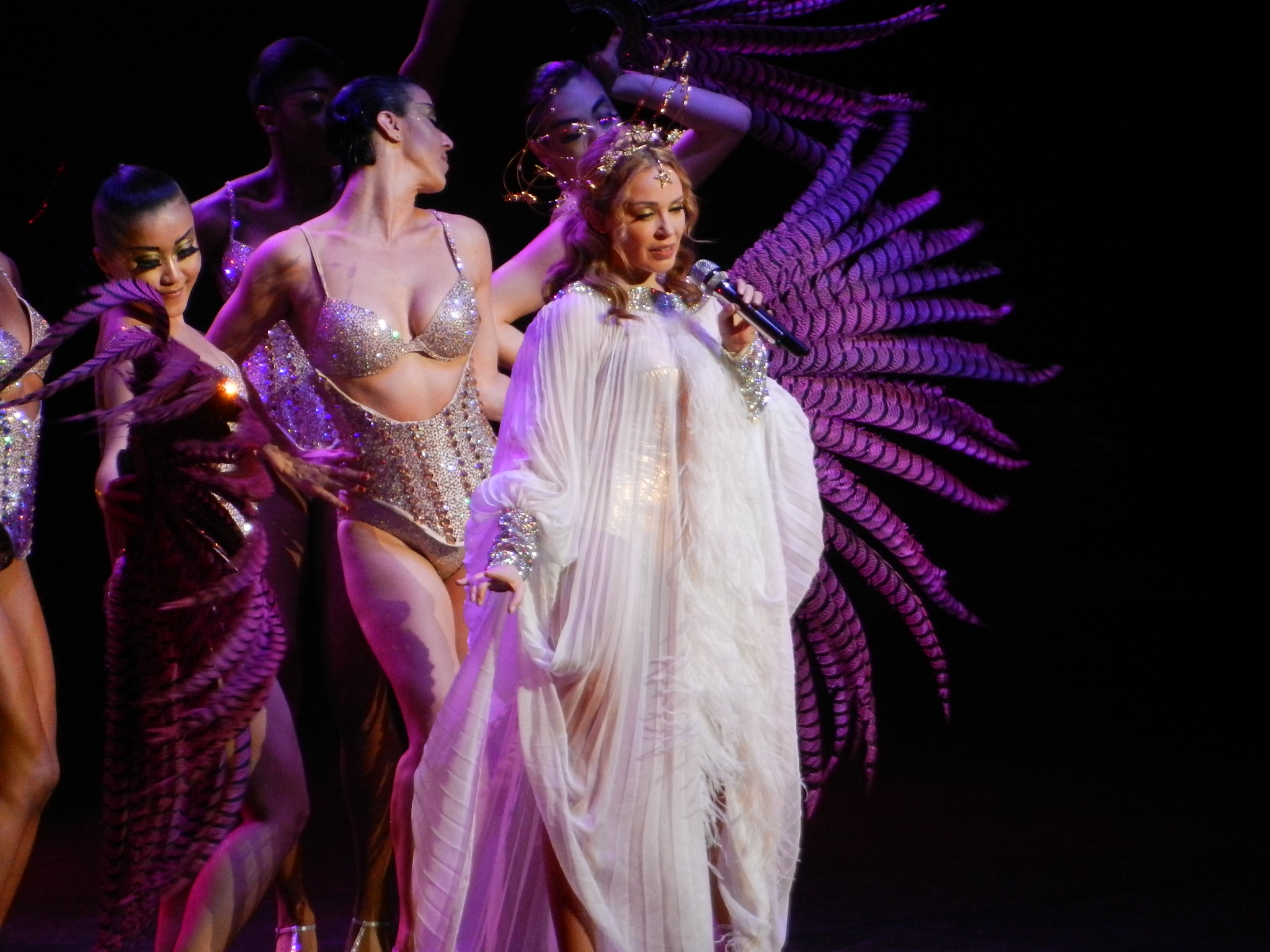We are undoubtedly living through one of pop’s most exciting, lively, and innovative eras. With Charli xcx and Troye Sivan’s iconic rave-esque Sweat Tour, Sabrina Carpenter’s cutesy yet sultry Short n’ Sweet Tour, and Chappell Roan’s meteoric rise through her grandiose and drag-centered aesthetic, pop music is seeing a surge in young, expectation-defying talent after a relatively stagnant few years. In this era of pop that thrives on reinvention, self-exploration, and vibrant personality, Kylie Minogue’s new album, Tension II (2024), feels more repetitive and recursive than ever.
Australian pop icon Kylie Minogue rose to fame in the late ’80s with hits like “I Should Be So Lucky” (1987) and “The Loco-Motion,” (1987) and continued evolving her sound through the decades. Her discography consists of many genres, including disco, dance-pop, and electronic sounds, which kept her on the charts well into the 2000s. Tension (2023), the prequel to Tension II, was widely viewed as a critically acclaimed dance-pop album with some nods to her ’80s and ’90s roots, aiming to blend modern pop trends with hints of the nostalgia of her peak years.
As an avid consumer of both dance-pop and house music—and a frequent listener of Peggy Gou’s remix of Minogue’s “Can’t Get You out of My Head” (2023) on my house music radio show—I genuinely wanted to catch a ride back to the golden era of psychedelic ’80s dance music with Minogue’s airy and witchy voice… or at least to like the album. Yet while Tension II tries to lean into her signature blend of high pitched vocals with catchy electronic melodies, the album is not as unique, curious, genre-blending, or even as weird as some of the other artists that are taking the pop world by storm right now. Tension II is not necessarily bad, but definitely forgettable and too safe.
Lyrically and thematically, the album is an endless game of catch between four pillars: clubbing, flirting, drinking, and designer brands. Minogue is “flirting,” “yearning,” and “burning” for a seemingly forbidden pursuit in “Taboo,” and asking her friend if she knows someone to “turn [her] on” and “take [her] home” in “Someone for Me.” The aforementioned designer references are also difficult to miss, from the YSL dress in “Hello” to her Gaultier “armor” in the lead single “Lights Camera Action.”
While it is inspiring—and even empowering—that Minogue is still able to embrace this young, playful, carefree aspect of her personality, it seems more like an inauthentic performance rather than an integral component to Minogue’s character. It appears that Minogue is appealing to the clubbing and hookup culture she thinks younger generations are interested in, perhaps aiming to capitalize on imitation to generate a quick hit, but her message does not resonate as successfully as she had hoped.
Minogue’s attempt to preserve her signature sound while appealing to the music industry’s fast-paced, changing, and innovative expectations can also be felt through her onslaught of features and collaborative tracks released prior to the album itself. One example is “Edge of Saturday Night” with The Blessed Madonna, which has an engaging start with a deep, bass-heavy beat, but this is more thanks to The Blessed Madonna’s signature producing than Minogue herself. After a certain point the lyrics seems to blend into one neverending sentence due to the lack of intonation in the vocals or variety in the lyrics. Songs that feel like (or sometimes literally are) one long phrase can be incredibly immersive when they can take the listener on a journey in other ways, but this track made it far too easy to get lost in the repetition and zone out.
Another collaboration is “My Oh My” with Bebe Rexha. Admittedly, this song is a fun listen, mainly owing to the dynamic beat drop in the chorus, but it is ultimately just the same verse slightly tailored to each singer to embed a few personal details into the same lyrics repeating almost word-for-word. This is further perpetuated by vocals that are engineered and autotuned in such a way that makes it difficult to distinguish the switches between each singer, which, while definitely a challenge on the producer’s side to balance so accurately, results in a concerningly uniform sound. By the end, you don’t walk away with much beyond knowledge of each artist’s star sign (for those wondering, Minogue is a Gemini).
If Minogue is not reusing the same source codes that she has relied on for the past 40 years or getting overpowered by her collaborators, she sounds almost exactly like other mainstream artists. “Dance To The Music” is almost like a glimpse into what it would sound like if Dua Lipa and Sabrina Carpenter had a musical baby. Traces of Taylor Swift are palpable in “Shoulda Left Ya,” with the subdued electronic drum lines, echoing vocals, and adlibs closely resembling Swift’s Midnights (2022) album.
Minogue’s earlier hits, such as “Can’t Get You out of My Head” and “In Your Eyes,” will always be iconic pillars of ’90s and ’00s dance pop, but Tension II does not leave the impression that Minogue is able to keep up with the times. Her success from Tension clearly secured support from her record label to keep releasing and to go on tour, but Tension II does not do anything new or different for Kylie Minogue. On the contrary, Tension II is an unnatural marriage between her 2000s tracks and what she (or her producer) thinks the industry is looking for today, resulting in an album that, after 36 minutes and 51 seconds, is just… okay.






Your opinion is only yours… for me Tension II is Kylie at one of her best eras….